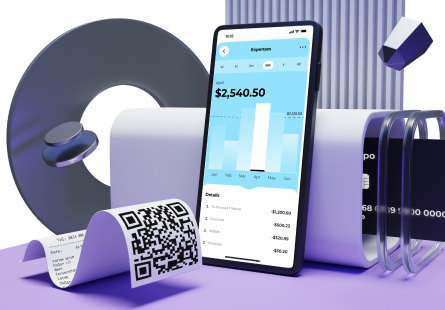Have you ever wondered how applications communicate with each other? They use the Application Programming Interface, or API. Although this term has already been around for several decades, the concept is now talked about more than ever, with the API-first approach being a hot topic right now. So what is API-first development, and why is it important? Go on reading to find out.
What is API?
As already mentioned, API means Application Programming Interface. While the word Application refers to any software, Interface represents a contract of service between two applications. This contract determines how the applications communicate with each other through requests and responses.
A typical example of using APIs in software design is a social login. Social login enables users to authenticate via Google, Apple, or Facebook with a click. The API is responsible for that invisible interaction between the login screen and the social provider confirming user identity.
What is an API-first development approach?
API-first development is a software development methodology that puts the creation of the application programming interface (API) at the forefront of the development process. With this approach, developers create the API specification and design the API’s endpoints, data models, and authentication mechanisms before starting the coding process.
To put it simply:
It’s a development approach that considers planning and designing APIs before actual coding.
API-first development achieves consistency and reusability by using an API specification language that other developers can easily understand and navigate.
The API-first development strategy differs from the code-first approach when development teams first design functionality and then add API. On the contrary, an API-first development approach means that developers start with creating an API design.
Key principles of the API-first strategy
1. Treat APIs as products
It’s never enough to publish an API — you have to prepare it for public consumption. An API-first development approach involves having a clear picture of how other developers will interact with your API and how you will maintain it.
2. View APIs as the foundation
An API-first approach requires that developers focus on APIs from the earliest phase of development projects. When putting APIs first, you ensure that the entire platform’s functionality will be accessible through the APIs.
3. Foster an API-first culture
An API-first approach goes far beyond technology — it also involves a culture of solid collaboration within development teams. Given that, a thriving API-first environment calls for effective leadership from API-first savvy product managers.
4. Use API-first to support microservices
Today’s software development landscape is experiencing a major shift toward reusability, driving businesses to focus on reusable components. Here’s an excellent example to demonstrate this trend and the role of API-first in it: instead of developing an eCommerce platform from scratch, retailers can “assemble” ones from reusable components (inventory management, payment gateway, checkout, etc.) up to their specific needs. And since these components need to communicate with each other, you can’t implement microservices without APIs. API-first development guarantees that other developers will be able to integrate your APIs with theirs easily.
5. Elaborate on a clear API contract
By building open and accessible APIs, API-first companies greatly facilitate reusing, redeploying, and sharing functionality. This is achieved through a consistent API description language used to draw up a contract that serves as a single source of truth, defining how an API is expected to behave.
Reasons why you should consider an API-first approach
The idea of using an API-first approach is becoming increasingly popular in the modern business environment. Fair enough, since rapid functionality implementation delivers tangible business value. But not only that: the API-first approach is associated with other positive effects. Let’s see which.
Simultaneous development
The API-first approach suggests creating a contract following which different teams can work on multiple APIs in parallel. Developers don’t need to wait for updates before starting to build a new API. Instead, they can mock APIs and test API dependencies relying on the established API definition.
Faster time to market
API design-first approach can significantly accelerate the development process, which translates into faster time to market. At first glance, it might look that API-first is responsible for delays in time to market as it requires starting with the API design instead of coding. Still, API-first can reduce time to market in the long run as it allows for reusing existing software and infrastructure, cutting down on the development time.
Lower development costs
Although APIs themselves don’t cut down costs, they maintain broader refactoring of value chains, which goes a long way toward decreasing development costs. Creating an API ecosystem makes the code reusable and more efficient. In the API design-first context, one of the fundamental metrics is the speed at which digital experiences are generated, which often affects development costs positively.
Enhanced development environment
When creating API design, it is vital to focus on the developer experience (DX). From the DX point of view, a developer is a consumer, an intermediary, and an API end-user, which makes developers a critical component of the value delivery chain. Developers build APIs and utilize them to benefit the consumer and the organization.
According to the API design-first approach, APIs are products rather than enterprise technology. The primary purpose of the API-first approach is to build an extensive ecosystem that allows developers to access data and use it as the basis for developing applications. Given that, by going API-first, you prioritize developer experience.
Increased product quality
Following API-first strategies facilitates creating high-performing, innovative products since API-first enables easily adding new functionalities and integrating your application with external services. What is more, integrating a system built on microservices using APIs helps create fault-tolerant systems – when a microservice fails, it doesn’t usually affect the entire system. These factors undoubtedly feed into better product quality and greater customer satisfaction.
DeepInspire CEO Pavlo Terletsky about the advantages of the API-first approach
Teams following an API-first approach usually have a product mindset. It means they realize that the product may evolve in the future and that the full scope of use cases for their API may be unclear from the beginning. But they are ready to iterate the product to eventually give users what they need.
API-first allows different teams to work in parallel. Development streams can move at different velocities or in parallel (e.g. front-end working with mock APIs while the back-end is not ready), which provides more flexibility and speeds up time to market.
And one more important thing: well-designed, well-documented, consistent APIs provide positive developer experiences, simplify the onboarding process and enhance testing (allowing to easily identify on which side the issue exists).
Although API-first requires you to invest more time & energy into planning the APIs, it can significantly accelerate the development process, reduce risks, optimize further development costs and make the product more compatible and adaptable.
Final words
To sum up, an API design-first approach can enormously benefit your business. This innovative approach to software design facilitates the creation of more scalable, flexible, and failure-proof products and improves developers’ experience. In addition, an API design-first strategy allows for parallel development, speeding up time to market and reducing development costs.







